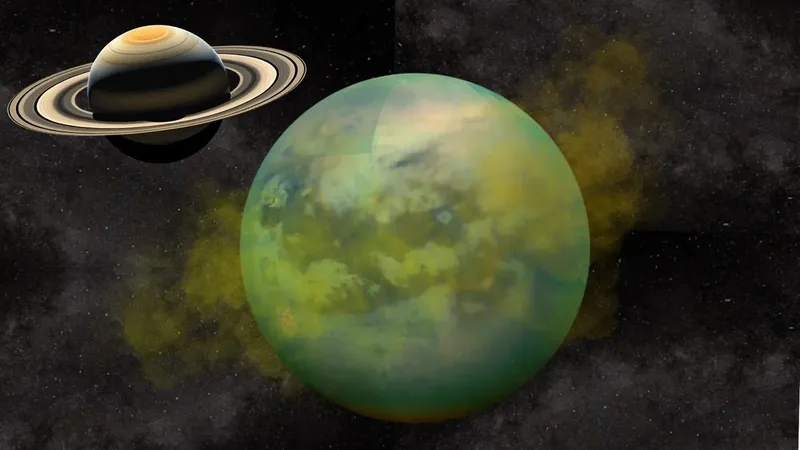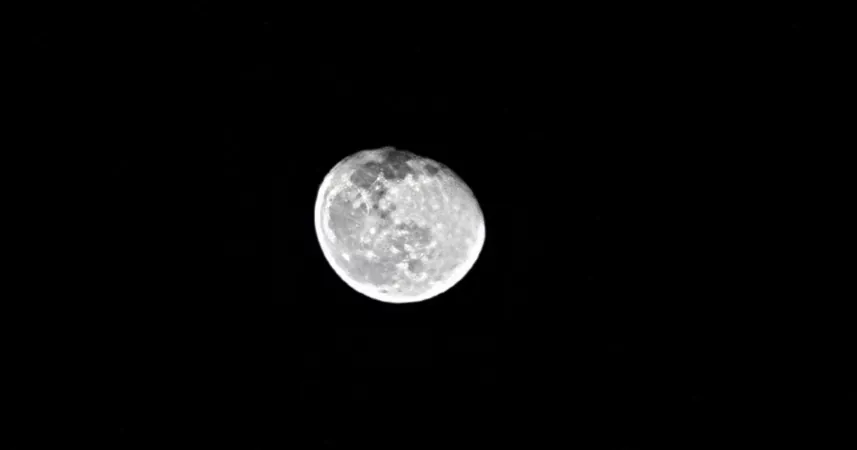
Could Titan Harbor Life? New Findings Reveal a Hidden Layer of Methane Ice!
2024-11-03
Author: Wei Ling
Introduction
Scientists are buzzing with excitement over a groundbreaking discovery about Saturn's largest moon, Titan. Recent research indicates that Titan may have a six-mile-thick (9.7 kilometers) crust made of methane ice lying beneath its icy exterior. This extraordinary layer could be key in uncovering signs of life lurking beneath Titan's surface and may even provide insights beneficial to combating climate change on Earth.
Titan's Unique Features
What makes Titan so intriguing is its striking resemblance to Earth. It is the only other known celestial body, aside from our planet, that boasts a dense atmosphere and the presence of rivers, lakes, and seas. However, these bodies of liquid are composed of hydrocarbons such as methane and ethane due to the moon's frigid temperatures. Despite this, the outer layer of Titan is primarily made of water ice.
Research Findings
A team of planetary scientists from the University of Hawaii at Mānoa is at the forefront of these findings, suggesting that trapped methane gas within the ice shell could warm the underlying layers and create conditions that might allow biological markers to ascend to the surface—potentially offering a glimpse of life sustained beneath the ice. “If life exists beneath Titan’s thick ice shell, biomarkers would need to rise to the surface where they could be detected during future missions,” stated Lauren Schurmeier, the lead researcher. “Warming conditions could facilitate this process.”
Mysteries of Impact Craters
The clue leading to the discovery of this unique methane ice layer came from the study of Titan's intriguing shallow impact craters. Scientists have observed only 90 craters on this moon, which is puzzling, as they are unexpectedly shallower than anticipated. In comparison to other celestial bodies, researchers had expected many more craters—and deeper ones at that. Schurmeier expressed surprise at this phenomenon, speculating that some unique processes on Titan could be at play, allowing these craters to fade more quickly than they do elsewhere.
Methodology and Simulations
To investigate further, the team employed computer modeling to understand the surface dynamics of Titan post-impact, especially if the icy shell were enveloped in this insulating layer of methane clathrate—a solid compound featuring methane trapped within a crystalline water structure. Their simulations indicated that a methane clathrate crust thickness of around five to ten kilometers best explains the observed crater depths. This scenario also suggests that Titan’s internal environment is more dynamic than scientists previously thought, with a warmer core that facilitates rapid geological changes.
Implications for Earth and Beyond
The implications of this research extend far beyond astronomical interests; they may provide critical insights into Earth's clingy relationship with methane. As clathrates in Siberia's permafrost and the Arctic seafloor unravel and release methane due to climate change, understanding Titan's methane cycle could illuminate corresponding processes happening on our home planet.
Future Investigations
Thanks to the presence of this methane clathrate crust, Titan may potentially hold vast volumes of liquid water beneath its surface—an environment conducive to life as we know it. This groundbreaking research not only reshapes our understanding of Titan but also emphasizes the moon’s role as a natural laboratory for studying methane's behavior and its implications within planetary systems.
Conclusion and Upcoming Missions
Looking ahead, these discoveries will significantly guide the upcoming NASA Dragonfly mission, set to launch in 2028 with aspirations of arriving in the Saturnian system by 2034. The Dragonfly spacecraft is poised to land on Titan's surface and conduct in-depth investigations that could revolutionize our understanding of this enigmatic moon.
This pivotal research was recently published on September 30 in The Planetary Science Journal, marking a major step toward potentially answering the universal question: are we alone in the cosmos? As Titan continues to intrigue scientists, the mysteries beneath its surface may soon reveal life-changing answers.



 Brasil (PT)
Brasil (PT)
 Canada (EN)
Canada (EN)
 Chile (ES)
Chile (ES)
 España (ES)
España (ES)
 France (FR)
France (FR)
 Hong Kong (EN)
Hong Kong (EN)
 Italia (IT)
Italia (IT)
 日本 (JA)
日本 (JA)
 Magyarország (HU)
Magyarország (HU)
 Norge (NO)
Norge (NO)
 Polska (PL)
Polska (PL)
 Schweiz (DE)
Schweiz (DE)
 Singapore (EN)
Singapore (EN)
 Sverige (SV)
Sverige (SV)
 Suomi (FI)
Suomi (FI)
 Türkiye (TR)
Türkiye (TR)